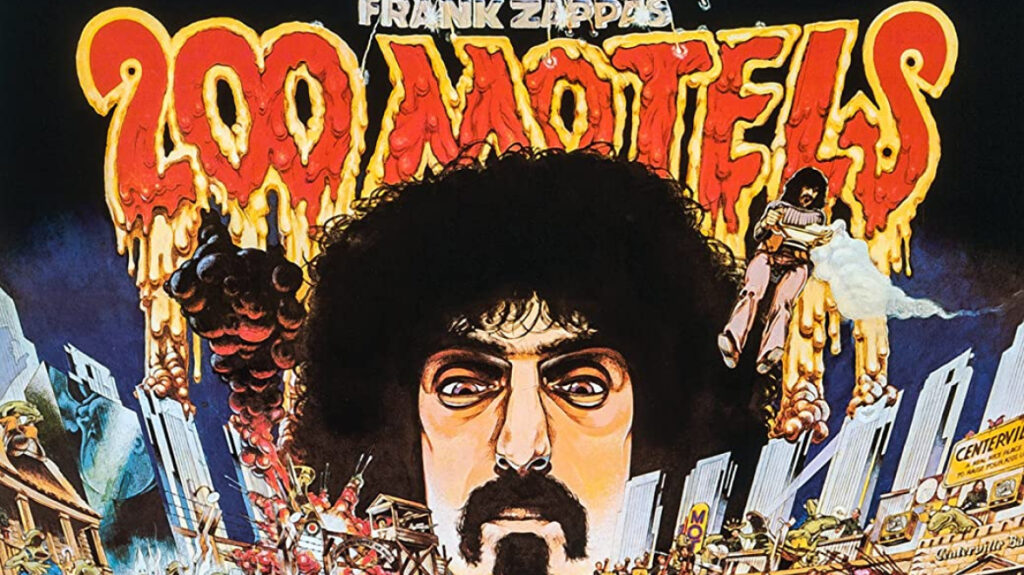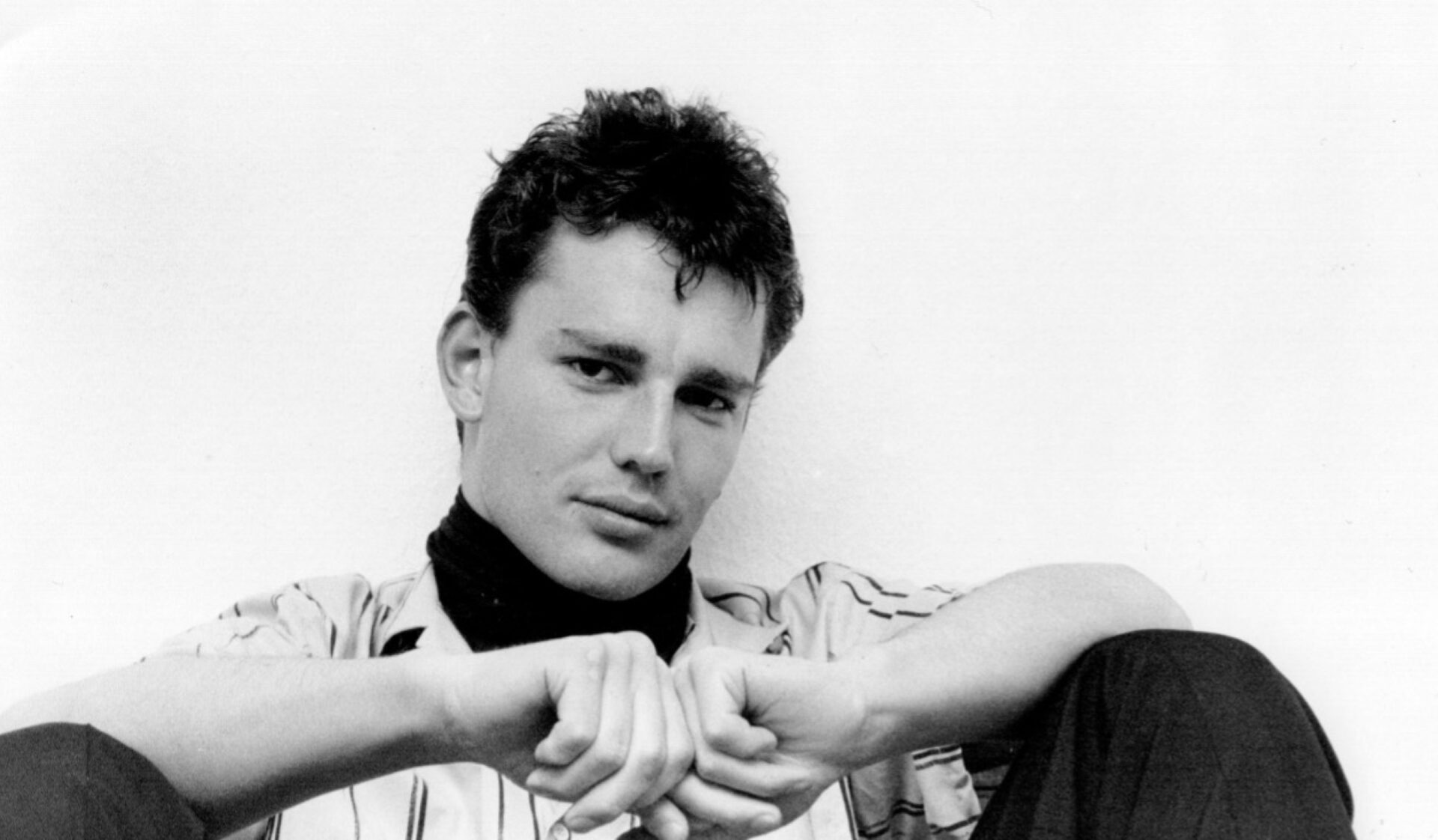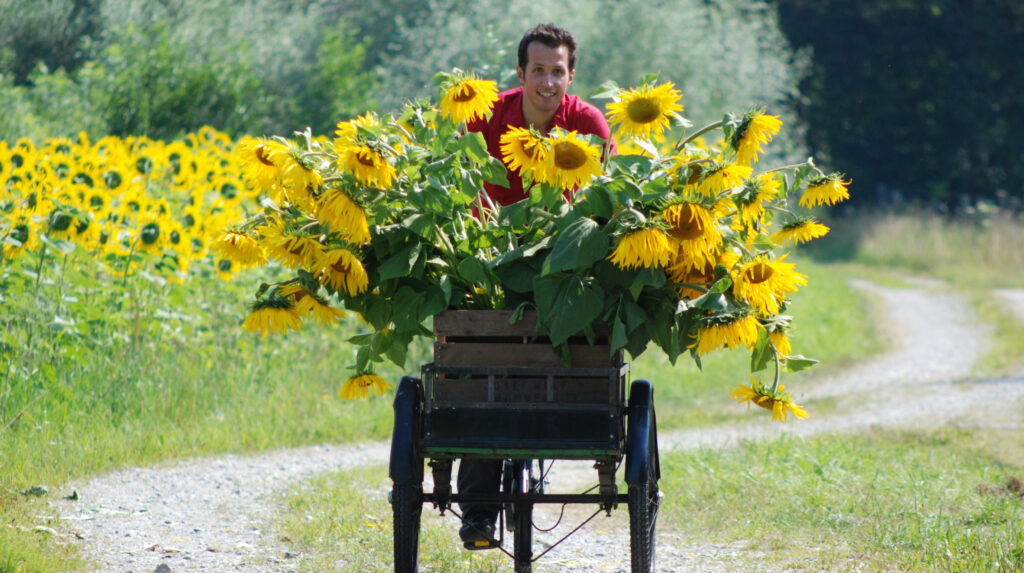Prologue
1975
Franz Gernstl, HP Fischer and Willy Frauenknecht move into a flat at Landwehrstraße 5. Franz Gernstl ends up as an intern at “Bayerisches Fernsehen”.
Franz Gernstl, HP Fischer and Willy Frauenknecht move into a flat at Landwehrstraße 5. Franz Gernstl ends up as an intern at “Bayerisches Fernsehen”.



Fun Fact
Frank Zappa is to blame for the name “megaherz”: His movie ”200 Motels” was not shot on 35-mm film – as had been customary until then – but in the new video format. Inspired by this movie and enthusiastic about the new technology, HP Fischer also gets himself a video camera. The frequency of these cameras is measured in megahertz, hence the idea for the company name.
During a road trip through the USA, Franz Gernstl and HP Fischer discover what would become their favourite pastime: they take photos from their moving car and realise that it is a great way to pass the time. Fischer says: “It would have been nice to have a film camera with us and film everything.” That is probably how the idea of creating travel reports came about. But there is still a long way to go.

Franz Gernstl and HP Fischer set up megaherz as an independent production company. Their first client is indeed “king” – Dieter König, an editor at BR (Bayerischer Rundfunk) broadcasting company. He gives Gernstl’s team a precise assignment: “Take a drive and shoot me something nice!”



For their first production, a four-part reportage series for the channel ARD, Franz Gernstl and team travel along the tenth degree of longitude, from the Allgäu to the Baltic Sea. And so, the cult series “Gernstl unterwegs” is born – although it was initially called: „10 Grad östlicher Länge – schnurstracks durch die Republik“.
At the beginning, not everyone is convinced by the unusual concept of the series, involving ‘driving around and looking for something’, but the growing success of their cinematic scouting finally proves the Gernstl team right.

The first four films are so well received that the BR broadcasting company orders four more parts. The company megaherz moves into its first office.

First venture into children’s TV: Bayerischer Rundfunk acquires the licence for the programme “Dingsda” and has the explanatory clips of the ARD entertainment show produced by megaherz. For 14 years.

A fateful encounter: Fidelis Mager shoots an actor portrait with HP Fischer for the magazine show “Live aus dem Alabama”. While filming, the boot lid of the camera car hits Fidelis in the back of the head. Neither of them expect it at the time, but the bruised director will later join megaherz as a partner.
At the time, Fidelis Mager was head writer for the legendary live program “Live aus dem Alabama”/”Live aus dem Schlachthof,” which was hosted by Giovanni di Lorenzo, Sandra Maischberger and Günther Jauch, among others. With his company TEXT+BILD, he also produced reports and comedy shows for ARD, ZDF and ProSieben – even then often in co-production with megaherz.

Esther Wenger becomes producer and managing partner of megaherz. For the show “Dingsda” she interviewed 10,000 children over the course of ten years and created 200 episodes. During this time, the children’s magazine “Zappzarapp”, the game show “Bayern gewinnt” and “Recht so! Das Fernsehschiedsgericht” were also created.
For the first season of the series “Denk ich an Deutschland” (BR/WDR), megaherz is working with five renowned fiction directors and giving them cinematic carte blanche:
their assignment is to create a documentary film about their personal view of Germany. megaherz is leaving everything else to the creative imagination of Katja von Garnier, Doris Dörrie, Sherry Horman, Andreas Kleinert and Dominik Graf.
On 1 April, journalist Fidelis Mager (formerly of “Text+Bild”) joins megaherz as managing director; HP Fischer becomes full-time camera operator.

megaherz launches its first feature film, “Erleuchtung garantiert“. In this movie, Uwe Ochsenknecht and Gustav Peter Wöhler end up in a Japanese Zen monastery together, rather unintentionally.
megaherz continues its successful course with new series concepts and new channels: megaherz produces the documentary series “Denk ich an Deutschland” and its first feature film, Doris Dörrie’s “Erleuchtung garantiert” with Uwe Ochsenknecht and Gustav Peter Wöhler.
“Erleuchtung garantiert” wins two Bavarian Film Awards: the Actor Award for Uwe Ochsenknecht and the Producer Award for megaherz. The series “Denk ich an Deutschland” is awarded the Grimme Award and the Bavarian Television Prize.
The new season “Gernstl unterwegs” also receives the prestigious Grimme Award.
The jury’s statement:
‘In his series “Gernstl unterwegs”, he travels around the borders of Bavaria with a small team, camera operator Hans Peter Fischer and sound recordist Stefan Ravasz, and invites people to chat.
His unobtrusive questioning, which is always friendly and remains respectful, gets the interviewees to open up. We get to hear what is still the most interesting thing people have to offer: stories.’
While the “Denk ich an Deutschland” movies by Leander Haußmann, Klaus Lemke, Peter Lilienthal, Peter Patzak and Fatih Akin are the focus of the 35th International Hof Film Festival, Andreas Dresen’s “Herr Wichmann von der CDU” is being shown on cinema screens all over Germany: In his documentary film, Dresen portrays a young local politician who fights for votes in the SPD-dominated Uckermark region, with snappy slogans and free pens.
With the image film “Siemens im Senegal”, megaherz ventures into a new business field: corporate film. Director Peter Ladkani’s visually opulent work is awarded the Goldene Pyramide prize by the ITVA.
The highlights of the “noughties”: megaherz continues its successful formats and expands its portfolio: it now produces worldwide. Alongside successful feature films, new series concepts are created and quickly become audience favourites, including the children’s programme “Willi wills wissen” and the series “Landfrauenküche”.

New episodes of the 25-minute children’s edutainment programme “Willi wills wissen” are broadcast almost weekly, with megaherz making an impact on an entire decade of children. And the beauty of it is: parents like watching it too.
In the meantime, the almost 200 episodes of “Willi wills wissen” have become a cult show and have won many awards, including the EMIL special prize (awarded by TV Spielfilm), the Bavarian Film Award, the Erich-Kästner Film Award, the Robert-Geisendörfer Award, the Diakonie Baden- und Württemberg Journalism Award, the Cornelius Siegel, the Silbernes Pferd, the HEUREKA Journalist Award and the Special Award of the State of North Rhine-Westphalia for Children and Youth Programmes at the Grimme Awards Ceremony.

Since 1983, director and megaherz founder Franz X. Gernstl has been travelling across Germany in a VW bus. With the title “Gernstls Reisen”, he compiles the best moments from his archive of over 20 years into a film. The road movie is about his tireless search for people who know how to live well.
A movie review states:
“Three friends travel in a VW bus through Germany, Austria, Switzerland and South Tyrol. One has a camera, the other a microphone and the third simply the talent to listen. They usually arrive at their destinations by chance along the way: people.
No one in particular, no famous or no infamous people, but simply people who talk a bit (or a lot) about what they do and what drives them. And at times you see a little glimmer of what we call happiness.








With over 200 broadcasts of the popular children’s series “Willi wills wissen” and its spin offs, megaherz is shaping an entire generation of young TV viewers.

From the “Landfrauenküche” megaherz develops tailor-made series for NDR, WDR (“Land & Lecker”, “Von und zu lecker”, “Bunt und Lecker”, “Lecker an Bord”) and SWR (“Lecker aufs Land”, “Mein leckerer Garten”) and establishes a whole “Lecker-Welt”, which has guaranteed the stations high ratings and enthusiastic viewers for over 10 years.
On behalf of SuperRTL, megaherz will produce more than 80 children’s TV shows in the series “Vollgas zurück”, “Einfach tierisch” and “Tierisch unterwegs” from 2012.
megaherz co-produces a cinematic essay on the state of German television: “Es werde Stadt! 50 Jahre Grimme-Preis in Marl“ (BR). The director is ten-time Grimme Prize winner Dominik Graf.
In the same year, megaherz sends 450 people and 100 teams all over Bavaria to depict the federal state in its entirety. One year later, 24h Bayern earns BR the highest daily market share in the station’s history.
Oliver Gernstl becomes managing director, after having worked for megaherz for the first time in 1992: as a model for megaherz’s Christmas cards